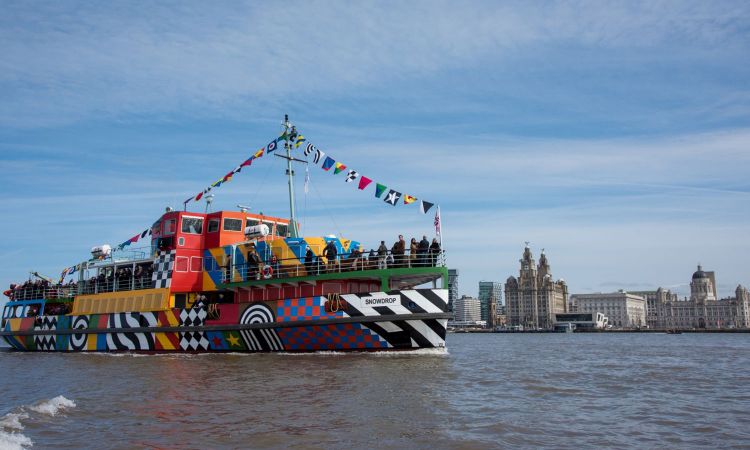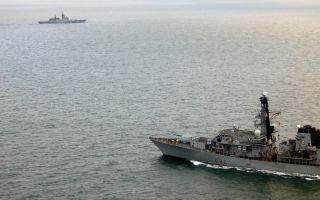Navy
Ship Shape: A Dazzling Display From The First World War
Inspired by cubist and vorticist artworks, dazzle painting emerged in the lead up to World War I as a solution to German U-boats centred on an unorthodox type of camouflage.
Rather than trying to make a ship vanish on the ocean waves, 'Razzle dazzle' was developed as a radical camouflage that used bold shapes and violent contrasts of colour. The purpose was to confuse rather than conceal.
RMS Mauretania in dazzle paint, arriving at New York with returning troops, 1918. (Credit: Tate Liverpool)
Dazzle painting played a vital role in the protection of British naval and trade vessels during the first world war when it was introduced as a system for camouflaging ships. The jagged patterns and clashing colours made it hard for enemies to get a fix on their target.
SS Alloway, American freighter, 1918 (Credit: Tate Liverpool)
By 1918, 4,000 ships and 400 navy vessels were covered with wild patterns.
RMS Mauretania in dazzle paint by Burnell Poole, 1919
Photograph: National Museums Liverpool/Tate Liverpool.
USS West Mahomet in dazzle camouflage, 1918.
Courtesy of US Naval Historical and Heritage Command, NH 1733.
The Mersey Ferry Snowdrop, 2015
Peter Blake ‘dazzled’ the Mersey Ferry Snowdrop as part of the first world war centenary. The boat is currently a floating gallery showcasing the history of dazzle painting.
Everybody Razzle Dazzle is a new exhibition at the Tate available to see until December 2016.
For more information, follow the link --> https://www.tate.org.uk/whats-on/tate-liverpool/exhibition/everybody-raz…








